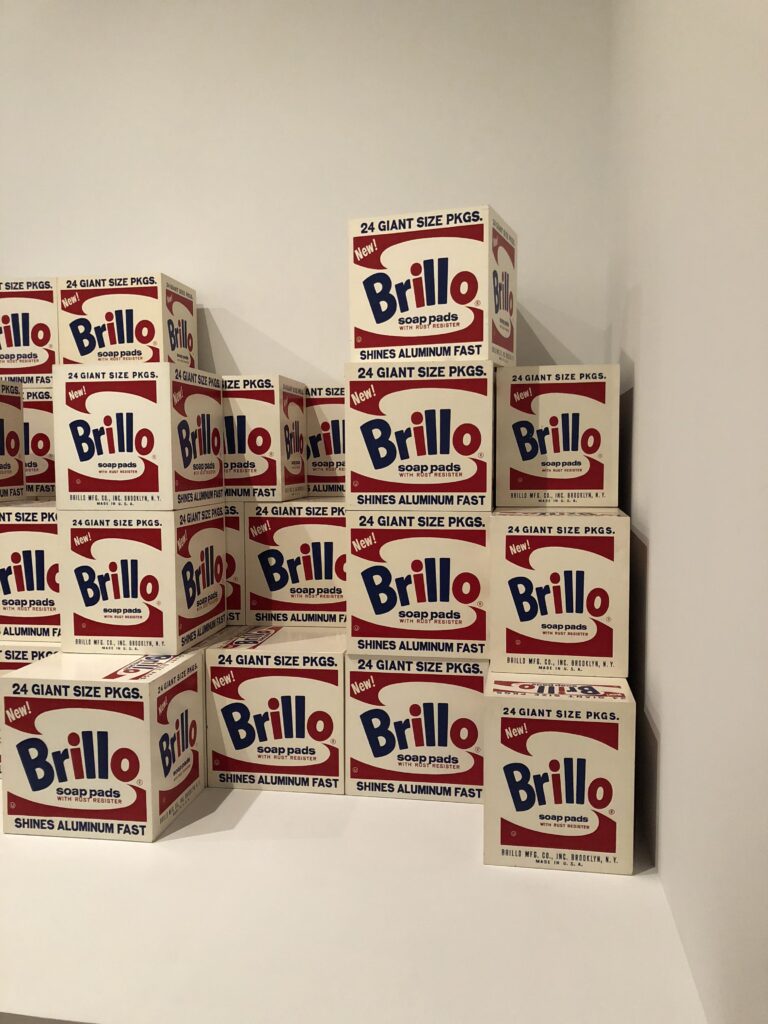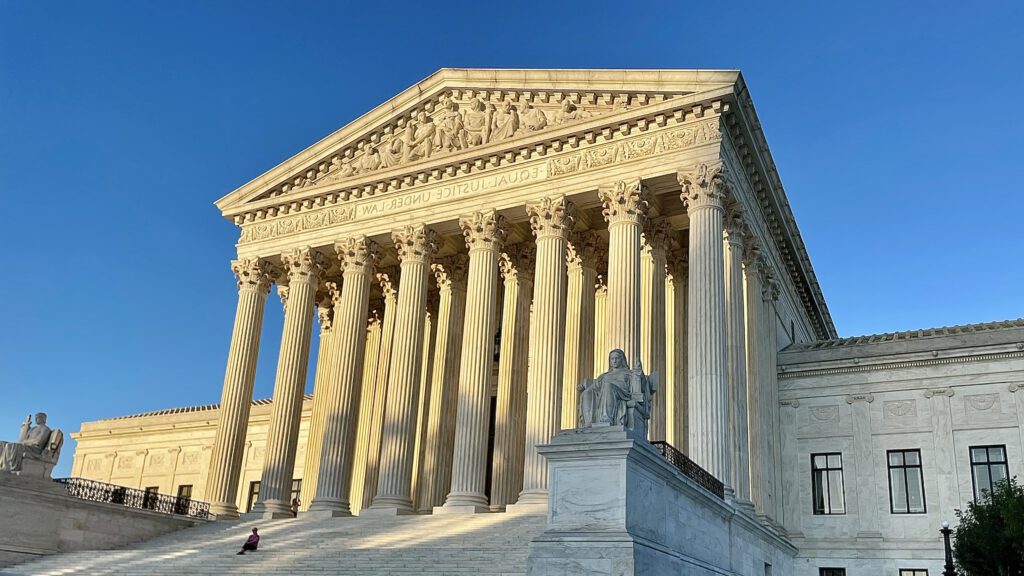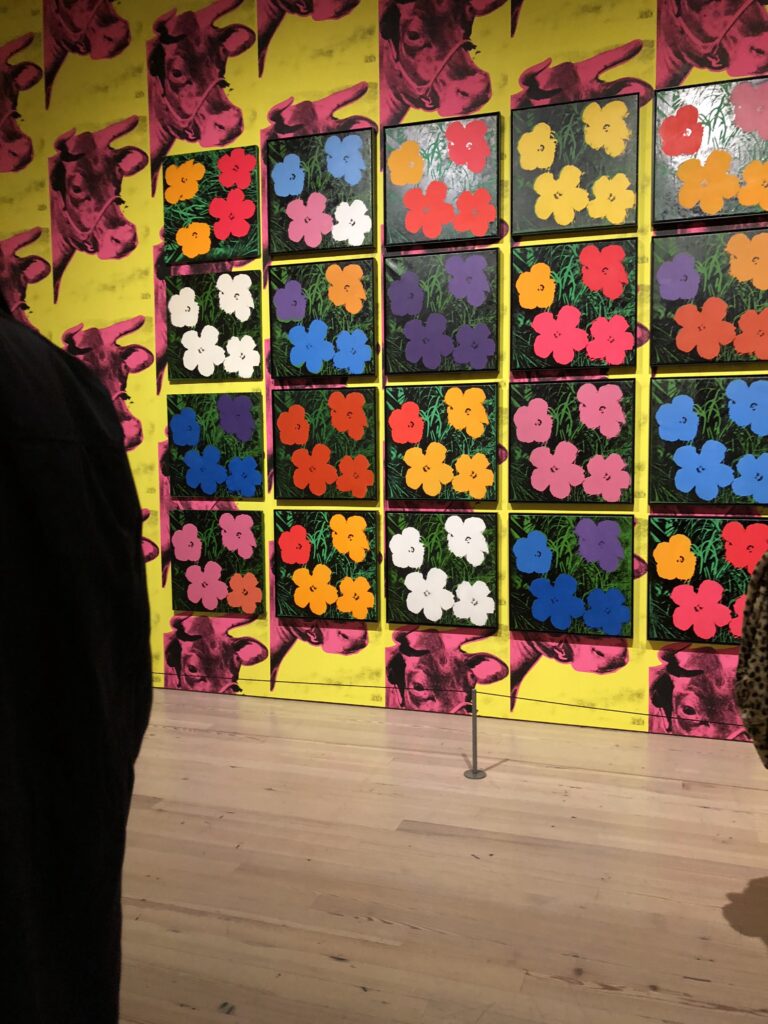
The Andy Warhol Copyright Dispute
Intellectual property is often a disputed issue in the scope of art law.
The latest case to be heard by the highest court in the United States concerns a photograph of the revolutionary musical artist Prince and arguably one of the most significant artists of contemporary times, Andy Warhol.
Opening arguments from both sides began last week. This is what we know so far from the first day.
The Opening Arguments
On October 12th, 2022, the Supreme Court justices heard lively arguments that touched on the meaning of art and referenced the relationships between media and art. The reasoning was a copyright dispute between photographer Lynn Goldsmith and Andy Warhol’s estate over the acclaimed artist’s paintings of the late musician Prince.

The photographer Lynn Goldsmith filed a claim requesting a declaration from the court that the artist had taken her photo of Prince, shot initially for Newsweek Magazine in 1981, and used the image as the premise for a series done in 1984, infringing on her creative copyright and licensing.
The Andy Warhol Foundation appealed that the series of paintings and illustrations fall under the Fair Use doctrine.
What Is Fair Use?
Fair Use is a doctrine under United States federal law which permits limited use of copyrighted material without first acquiring direct permission from the copyright holder.
If a copyright holder asserts infringement against a user, that user may be able to assert Fair Use as a defense.
Factors that support the defense of Fair Use include:
- The user’s purpose or intent, which includes how much the new work transforms the original
- The nature of the copyrighted work itself
- The amount of the original work used
- The effect of the use on the potential market or value for the original work (or whether the user is preventing the copyright holder from reaping the economic benefits of holding copyright)
The Fair Use defense is a critical element that courts consider in copyright disputes. A common instance in which Fair Use can be argued is when the newer work has a “transformative” aspect or purpose, such as parody, education, or criticism.
History of the Warhol Case
Andy Warhol, who died in 1987, was a pivotal figure in the Pop Art movement that arose in the late 1950s. Warhol was known for his silkscreen print paintings and other works inspired by photos of celebrities, such as Marilyn Monroe.
Additionally, Warhol made art referencing consumer products like Brillo pad boxes and Campbell’s soup cans. These paintings now carry considerable artistic and monetary value in the current market.
In 1984, Prince’s rise in fame as a musician was evident to everyone, including Vanity Fair. That same year, Vanity Fair commissioned Andy Warhol to create an image for an article titled “Purple Fame,” remarking on Prince and his burgeoning success.

At the time, Vanity Fair licensed the Goldsmith photograph, and the photo was intended to serve as Warhol’s reference photo. Goldsmith, who specializes in celebrity portraits, earns her living off licensing these photographs.
Vanity Fair published the illustration by Warhol accompanied by attribution to Goldsmith. She was paid her licensing fee. However, arguments claim that she was unaware that Warhol was the selected artist for the commission.
Unbeknownst to Goldsmith, Warhol went on to create additional works based on the original photograph she had taken. Following Warhol’s death, the Warhol Foundation acquired the title and copyright to the Prince Series.
When Prince passed away in 2016, Conde Nast published a tribute and used one of the paintings from the Prince Series on the cover. Goldsmith was given no credit or attribution for the image and, subsequently, no payment.
Goldsmith threatened to file a complaint for copyright infringement regarding the image at issue. The Warhol Foundation preemptively sought a declaration of noninfringement against Goldsmith. This declaration from the court would prohibit Goldsmith from filing any copyright infringement suits for Warhol’s use of her image. Goldsmith still countered with a claim of copyright infringement.
How Have the Lower Courts Ruled on the Warhol Dispute?
This case has traveled through district courts and the Second Circuit Court of Appeals, both of which took a different position on the matter.
The Southern District of New York ruled in favor of the Warhol Foundation, concluding that the use of the photograph for Warhol’s works constitutes Fair Use.
They agreed that Warhol’s Prince Series was “transformative” because it communicated a different message and meaning than the original photograph — to comment on celebrities and consumerism. This was presented as different from the intent and message of Goldsmith’s photograph.
Furthermore, Warhol had sufficiently changed the most protectable elements of the photograph, such as Prince’s “facial features” and “his pose.”
The Second Circuit Court of Appeals reversed the ruling and said that the use of the photo as a reference did not necessarily fall under the Fair Use defense.
The Appellate court stated that the District Court was wrong to assume the “role of art critic” and base its test for Fair Use on the meaning of the artistic work. Rather than judging the intention of the work, the court should have looked at the degree of the visual similarity between the series and the photograph. Therefore, the Appellate Court adopted a new test that judges the “transformative” factor solely on visual appearance and not on the meaning or message of the later piece. If a subsequent work serves the same “function” as the previous work, which in this case is to depict Prince, they cannot be transformative if they are both works of art and portraits.
Under that premise, the Second Circuit stated that the Prince Series was not protected by the Fair Use defense.
Following along? Okay, now to where we are today in this case.
Now, the Supreme Court must decide whether the Warhol Prince Series is protected under the Fair Use defense, and therefore determine when a subsequent work is transformed from a previous one.
Inside the Courtroom

After both sides were probed for over an hour, some of the justices were vocal about their concerns on the matter of Fair Use, some very similar to the opinions issued by the lower courts.
Justice Samuel Alito questioned whether judges were qualified to focus on the meaning of the work or if that was a job that should be left to art critics. He also noted that the argument of intent is impossible to weigh given that Warhol has been dead for over three decades and cannot give his opinion.
Could This Ruling Limit Freedom of Expression?
The lead counsel for the Warhol foundation, Roman Martinez, argued that agreeing with the Second Circuit would upend settled copyright principles and dispel creativity and expression.
According to Martinez, copyright law is designed to foster innovation and artists often build on the achievements of others.
He emphasized that Warhol’s works are currently found in collections worldwide, including the Museum of Modern Art in New York and The Tate Modern in London, as well as the monetary value of Warhol’s work at auction.
Martinez stressed that Warhol made substantial changes to Goldsmith’s photograph by cropping, resizing, and altering the angle of Prince’s face—while also changing tones, lighting, and details throughout the composition.
“While Goldsmith portrayed Prince as a vulnerable human, Warhol made significant alterations that erased humanity from the image, as a way of commenting on society’s conception of celebrities as products, not people. The prince series is thus transformative,” Martinez argued.
Can the Fame of One Artist Outweigh the Copyright of Another?
Lisa Blatt, one of the lawyers representing Goldsmith, argued a very different side of the story.
She went on to recite the 1976 Copyright Act and stated that creators and multi-billion-dollar licensing industries rely on its premise.
For those unfamiliar with the 1976 Copyright Act, it essentially grants all producers of creative works the right to control if, when, and how their works are viewed, distributed, reproduced, or adapted.
Because of this argument, she claims the Andy Warhol Foundation should have paid Goldsmith licensing fees given that the paintings by Warhol were almost identical to Goldsmith’s photo.
In perhaps one of the most damning claims by Blatt, she stated “fame is not a ticket to trample other artists’ copyrights.”
Justice Elena Kagan weighed in, questioning if Warhol’s fame and instant identifiability makes it easier to ascribe a new message to his work, despite the evidence of similarity in the two pieces of media.
What Does The Warhol Case Mean for IP and Creatives?

The verdict of this case could lead to broad implications for artists and the entertainment industry.
The defense of Fair Use and the extent of the protection of intellectual property have been argued for years through multiple forms of creative content, with some of the more popular examples being the Mona Lisa, the Lord of the Rings films, and the film adaptation of Jaws.
Although this case is immediately pertinent to the medium of painting, the holding of this case will certainly be used in similar disputes in film and television adaptations.
Copyright was originally intended to serve as an engine of free expression and to protect artists’ unique ideas. However, the interpretation of Fair Use factors as applied to derivative and newer works has never been scrutinized this closely by the highest court in the United States. This is why this case will guide the outcomes of similar disputes for the foreseeable future.
The ruling could very well bring a flood of similar cases, especially with Warhol given the very nature of his oeuvre. It could also affect the livelihood of other artists that take inspiration from others, using the transformative factor to justify their creative endeavors.
Some of the justices worried about the stakes for the creators of material that inspire other works too, suggesting that their eventual ruling, due by the end of June 2023, would take that into consideration.
The Supreme Court has not ruled on Fair Use in art since 1994 when it found that the rap group 2 Live Crew’s parody of singer Roy Orbison’s “Oh, Pretty Woman” made Fair Use of the 1960s song.